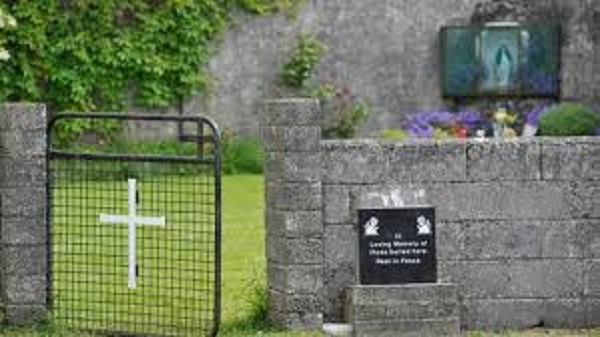
‘Mother and Baby’ homes have left an incredibly dark stain on Irish history. Run by the nuns and funded by the state, these homes are one of many examples of the abusive and oppressive nature of the Catholic Church in Ireland. Young, unmarried women, facing crisis pregnancies from as early as 1920 and until 1998, were sent to Mother and Baby homes, where they and their children experienced systematic abuse. It is estimated that 35,000 women passed through the doors of these Mother and Baby homes in Ireland, and over 6,000 children were born into them. In some cases, children were adopted by Irish families, against the will of the mothers, in other cases children were trafficked through Mother and Baby homes and sent to the U.S. The church and the Irish government profited off of what was essentially the sale of Irish infants.
Mother and Baby homes had alarmingly high mortality rates among both infants and mothers, with some of the main causes of death being malnutrition and infectious disease, and women frequently died in childbirth.
Only in 1998 did the last of Ireland’s Mother and Baby Homes close its doors. Since then, there has been growing anger at the horror women endured in these homes. The most prolific being the Bon Secours Mother and Baby Home, in Tuam, County Galway, operational from 1925-1961. Here, the deaths of 796 infants and children were recorded, with no existing burial records for all but two.
In 1975, an unmarked mass grave was uncovered, on the site of the former home. It was later discovered that an old septic tank had been used for the disposal of human remains. Despite the home closing in 1961, and the initial discovery of the mass grave in 1975, it wasn’t until 2015 that the Mother and Baby homes Commission of investigation was established. Over the last five years, the Commission has been compiling a database of 60,000 records, covering 14 named Mother and Baby Homes in their investigation.
Sealing the records
The Irish Government has sparked outrage in their decision to seal the findings of the commission for the next thirty years – with the exception of some information being sent to Tusla (the child and family agency), despite concerns that Tusla does not have the desire or the means to pass on relevant information the people affected by the Commission’s findings. Sealing these records silences the voices and the struggle of women who were forced into this situation. The Irish government – a coalition of the Fianna Fail, Fine Gael and the Greens – does not have the right to bury history, especially a history that could give answers to those who were separated from family because of the Mother and Baby Homes. The Commission operated on €7 million government funding per year. Public funds have gone into this investigation, yet members of the public are not entitled to see the findings of the commission, including those who were directly affected by the abuse.
This has led to the emergence of a new movement on social media, where people are asking the government to ‘Repeal the Seal’ on the findings of the Mother and baby homes. This way, Irish people can remember and acknowledge the struggle of all those who suffered the horrors of the homes. An online petition has garnered the support of over 180,000 people, which begs the question: Why did the Government vote to seal the records?
Separate church and state
The Catholic Church permeated all aspects of Irish society. In the last 25 years, we have seen reform in legislation that has arisen as a direct result of people pushing back against the presence of the church in Ireland – the legalisation of divorce, The Marriage Equality Referendum, and the Repeal the 8th movement. Without disregarding the success of these movements, it is important to note that their success by no means defines Ireland as a ‘progressive country’. This is further highlighted in the Government’s decision to seal the recorded findings of the Commission of Investigation into Mother and Baby Homes.
The need for complete separation of Church and State in Ireland has never been clearer. Sealing these records, silencing the voices of victims, and denying the survivors access to their own information, cannot and will not be tolerated. Survivors should not be expected to carry the shame of what happened in Ireland all those years ago. This is not their shame to carry, but that of successive Irish capitalist governments for having continuously allowed the abuse to be buried. Although twenty years have passed, the Irish government’s view of these vulnerable women and children seems to remain the same. It is clear from their complete failure to act that the Irish Government is still operating in the interests of the church.
This is a condemnation of the entire Establishment and bosses’ system in Ireland, and another powerful reason to fight for fundamental change, for a socialist society.

